You can test pH in M&P soap using five reliable methods: pH test strips for quick checks (aim for 8-10), digital pH meters for precision, red cabbage solution as a natural indicator, creating a 1% soap solution for accurate testing, and interpreting results to make adjustments. Always test fully cured soap with distilled water for consistency. Understanding your soap's pH guarantees safety and helps you create better products for your customers or personal use.
Using Ph Test Strips for Quick M&P Soap Assessments
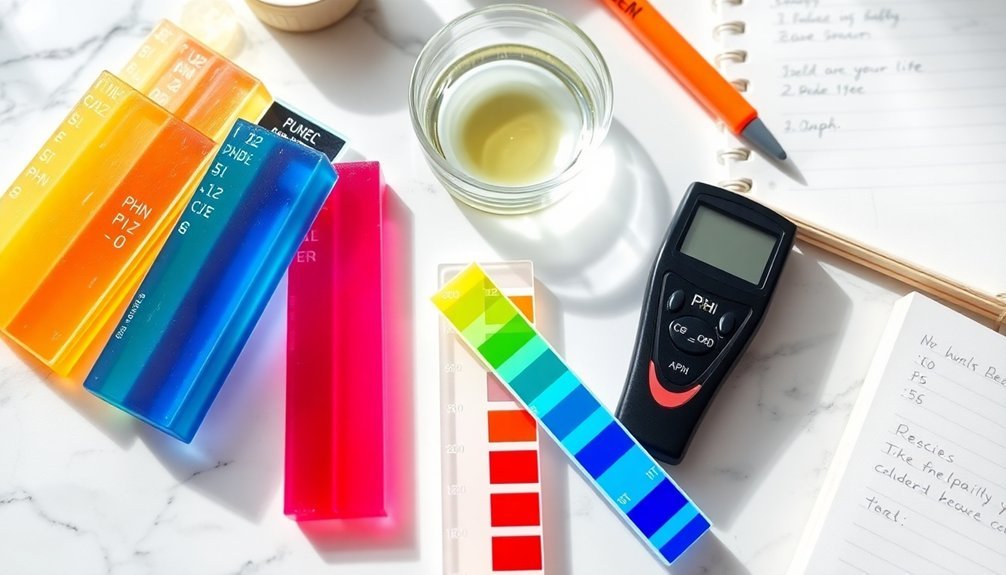
When you're making handcrafted soap, ensuring proper pH levels is essential for skin safety and product quality. pH test strips offer a simple, immediate way to check if your Melt and Pour soap falls within the safe range of 8-10.
To get accurate readings, create a small lather from your soap sample using distilled water. Rub the pH strips directly on the wet, sudsy soap and compare the resulting color to the provided chart. You'll instantly see if your creation is skin-safe.
Always wear gloves during testing until you've confirmed the pH is appropriate. For consistent results, only test fully cured soap, as pH levels can change during curing.
This testing method provides quick feedback without specialized equipment, helping you confidently deliver safe products to customers.
The Digital Ph Meter Method for Precise Measurements
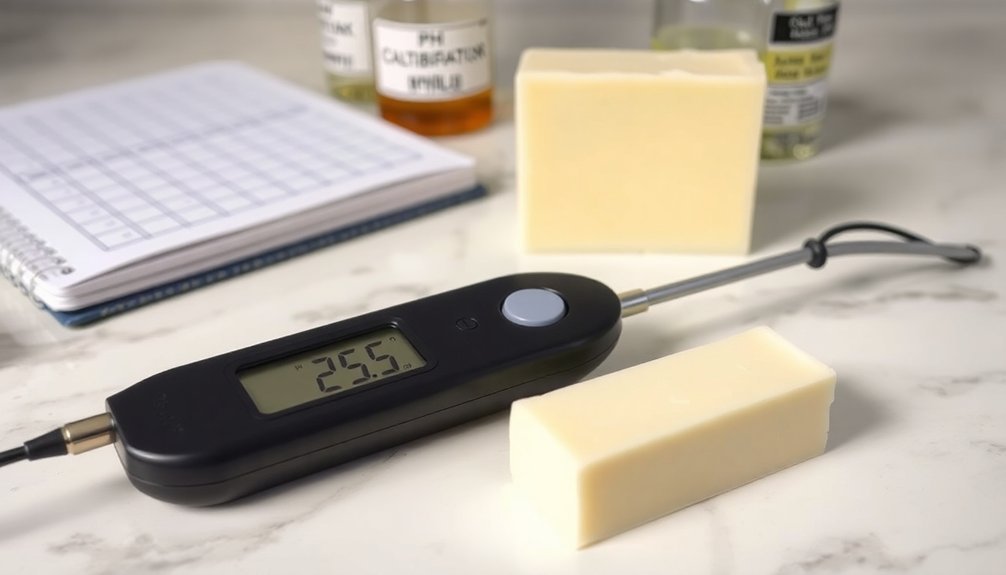
While pH test strips offer a quick assessment, digital pH meters represent the next level of accuracy for soap makers seeking exact measurements.
When you're ready for more precise pH testing, a digital pH meter becomes an invaluable tool in your soap-making arsenal.
To get accurate readings, you'll need to:
- Calibrate your meter with standard buffer solutions before each testing session
- Dissolve a small amount of your M&P soap in distilled water to create a testable solution
- Immerse the electrode in your soap solution until the reading stabilizes
- Rinse the electrode thoroughly with distilled water after each test
Remember to maintain your digital pH meter with regular calibration and proper cleaning.
This investment in precision allows you to detect subtle pH variations that might affect your final product's quality and skin compatibility.
Natural Indicators: Red Cabbage Solution Testing Technique
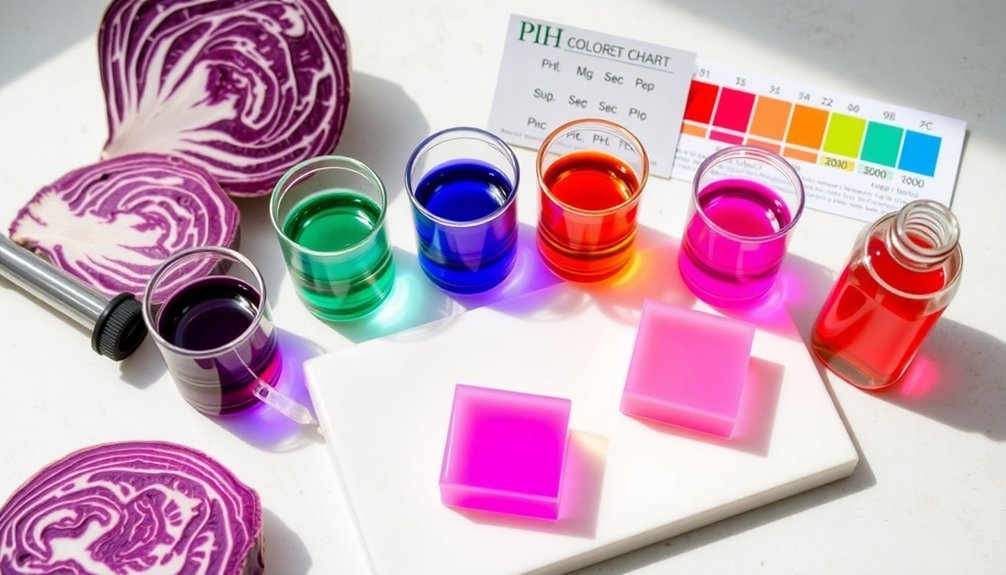
Nature provides soap makers with an accessible and vibrant alternative to commercial pH testing methods.
Red cabbage solution functions as a remarkable natural pH indicator that changes color based on the acidity or alkalinity of your M&P soap.
To create this indicator, simply boil chopped red cabbage in water, then strain the liquid.
When testing, dissolve a small soap sample in distilled water and add a few drops of your cabbage solution.
Watch as it transforms—purple indicates a neutral pH around 7, while green or yellow shows alkalinity above 7.
This method offers an eco-friendly approach to pH testing without harsh chemicals.
You'll appreciate how this natural pH testing technique provides visual confirmation of your soap's safety using ingredients straight from your kitchen.
Creating a Soap Solution for Accurate Ph Testing
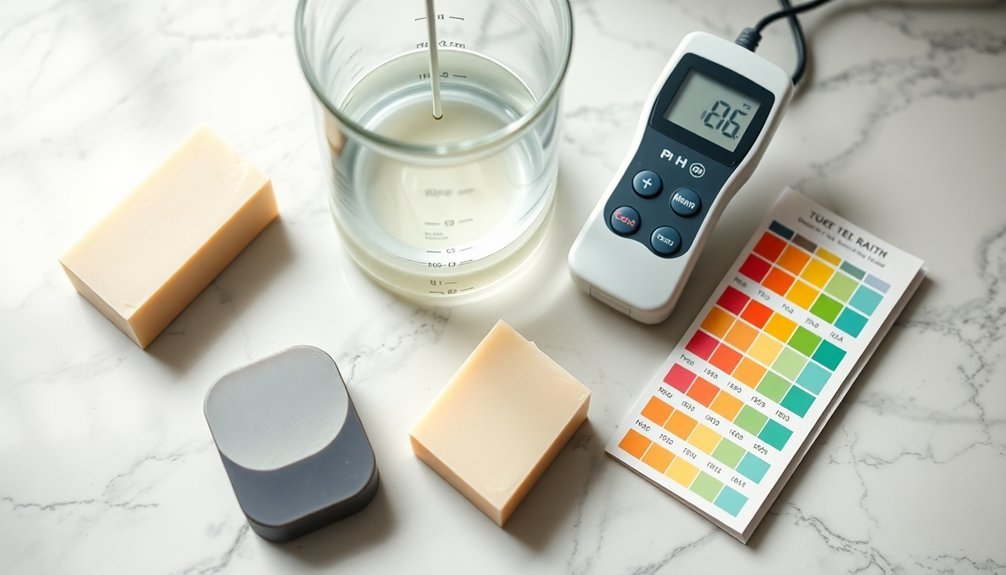
Because accurate pH measurement depends on proper sample preparation, creating a correctly diluted soap solution is a critical first step in your testing process.
To conduct reliable soap pH tests, you'll need to prepare a 1% solution by weighing approximately 1 gram of your M&P soap and dissolving it completely in 99 grams of pre-boiled distilled water.
- Picture crystal-clear distilled water boiling in a clean glass beaker, steam rising as carbon dioxide escapes
- Visualize a precise digital scale measuring exactly 1 gram of translucent soap shavings
- Imagine the soap slowly dissolving into the water, creating a slightly cloudy solution
- See yourself using a digital pH meter with its probe submerged in the cooled solution, displaying an accurate reading
Always allow your solution to reach room temperature before testing for consistent results.
Understanding Ph Results and Making Necessary Adjustments
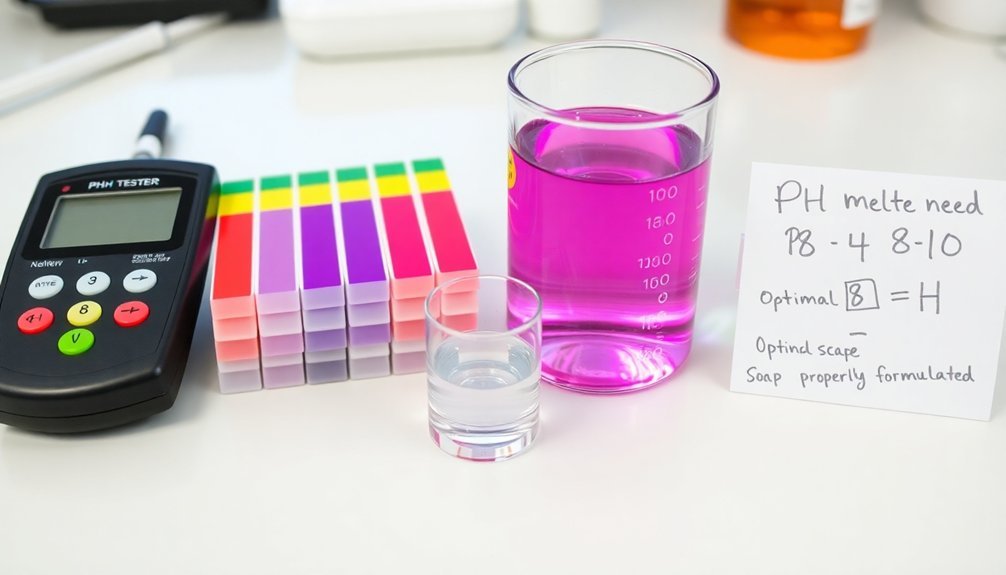
Once you've obtained your pH reading, interpreting the results correctly will determine what adjustments, if any, your M&P soap needs.
Typically, M&P soaps should fall between pH 8-10, indicating they're safe for skin use while maintaining cleansing properties.
If your reading exceeds 10, your soap may be lye heavy and potentially irritating. You can address this by adding moisturizing ingredients or diluting with distilled water.
Allow 24-48 hours of curing time before retesting to guarantee pH stabilization.
Conversely, readings below 8 suggest insufficient cleansing power. You'll need to reformulate with additional lye or oils to achieve proper balance.
For reliable monitoring of your soap's pH level, maintain consistent testing methods—always dissolve the same amount of soap in distilled water when conducting tests.
Frequently Asked Questions
How to Check Ph Level in Soap?
To check your soap's pH, dissolve a small piece in distilled water, then use pH paper or a digital meter to test the solution. You'll get the most accurate results after curing for 4-6 weeks.
How Do You Test Ph in Saponification?
To test pH in saponification, dissolve 1g of your soap in 99g of distilled water. Use a calibrated pH meter or quality strips to measure the solution, aiming for 8-10 pH for skin-safe soap.
How Do You Test Ph in a Spa?
You can test pH in a spa using a digital pH meter for precise readings or pH test strips for quick checks. Make certain water is well-mixed before testing and aim for a 7.2-7.8 pH range.
When to Ph Test Soap?
You should test your soap's pH after it's fully cooled (24 hours post-pour) and again after the 4-6 week curing period. This gives you accurate readings as the soap stabilizes over time.
In Summary
With these five testing methods, you're now equipped to monitor your M&P soap's pH levels effectively. Whether you're using simple test strips, a digital meter, or natural indicators, you'll guarantee your creations remain skin-friendly. Remember, proper pH testing isn't just about quality—it's about safety. Don't hesitate to make adjustments when needed, and you'll consistently produce balanced, gentle soaps your customers will love.
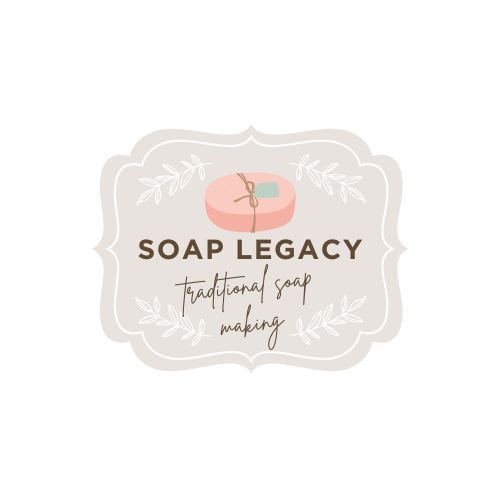
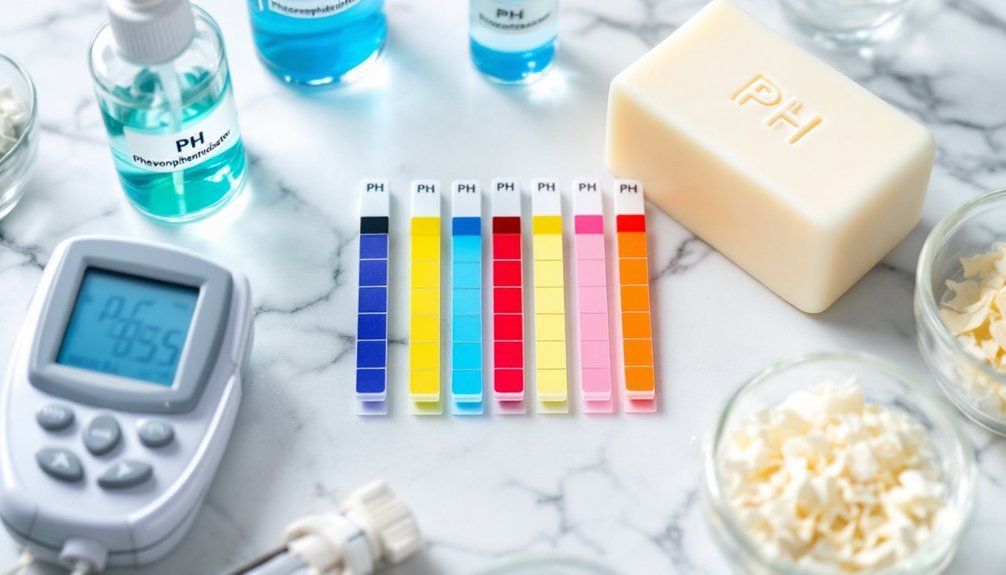
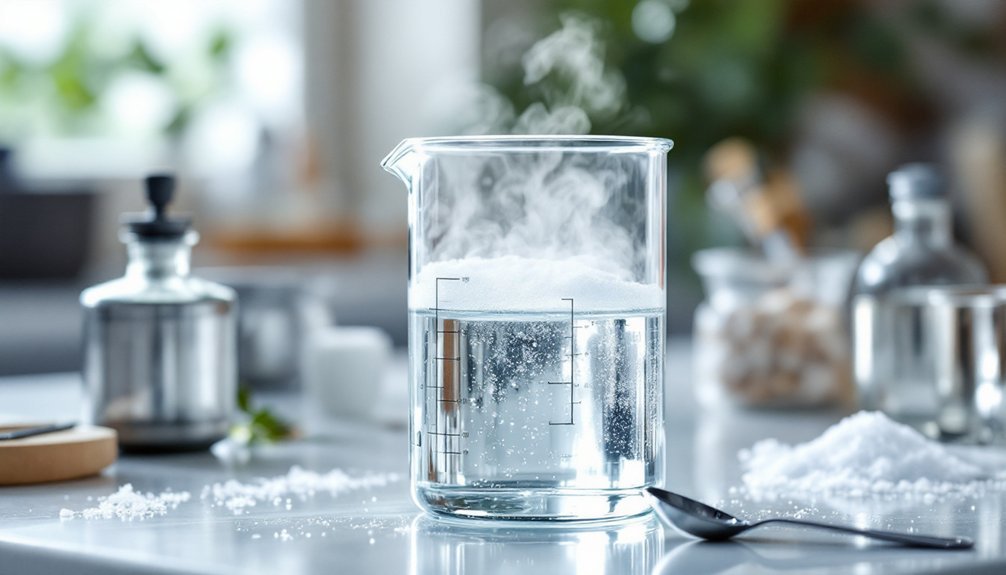
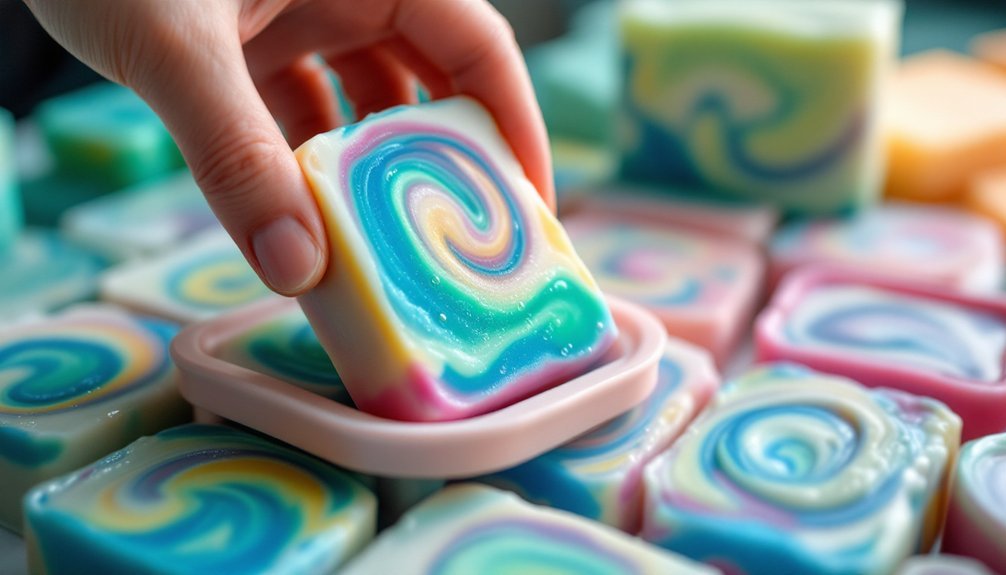

Leave a Reply